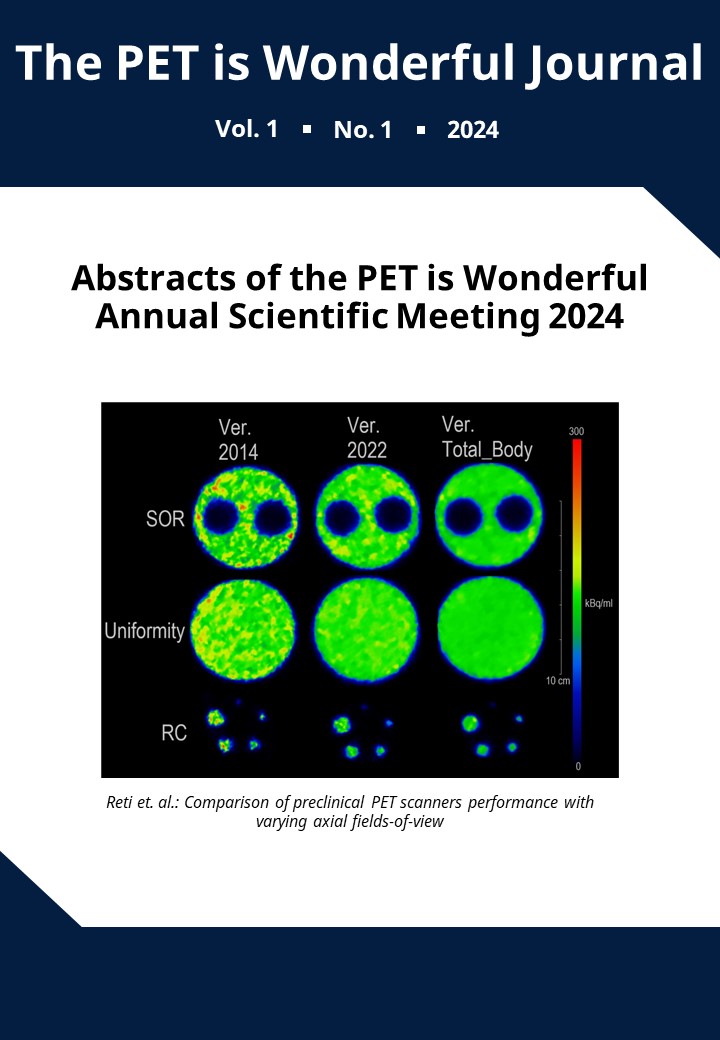The utility of PET-CT in baseline and sequential characterisation of Pulmonary Pleomorphic Carcinoma
DOI:
https://doi.org/10.2218/piwjournal.9878Resumen
Pulmonary Pleomorphic Carcinomas (PPCs) represent a rare and aggressive subtype of Non-Small Cell Lung Cancer (NSCLC) that can only be definitively diagnosed on a surgical specimen. This study utilised PET-CT to evaluate radiological characteristics of PPCs.
This study retrospectively evaluated the radiological characteristics of PCCs diagnosed in St James’s Hospital Dublin between 2012-2023. Computed Tomography (CT) and Positron Emission Tomography (FDG-PET) imaging features (size, location, density, shape, invasion, and growth kinetics) and standard uptake value for each lesion were evaluated.
39 PCCs were identified with a mean age of 66.5 years (range: 49-82 years). FDG-PET was performed in all 39 cases. Tumours demonstrated a high FDG uptake at baseline with a mean (SUV) of 12.6 (range: 1.4 - 36.9). A second interval PET-CT on average 3.3 months after the first in 3 cases demonstrated over 120% increase in SUV. The mean tumour size was 4.3 cm (range: 1.0 - 14.5 cm). Tumours developed rapid interval growth, reaching a mean maximum diameter of 6.6 cm (53.4%) within a mean of 2.1 months. Tumours were predominantly located in the upper lobe (71.8 %) and displayed necrotic features in 53.8 % of cases. 82.1% of tumours invaded the mediastinum.
This study describes the largest cohort of Pulmonary Pleomorphic Carcinoma in the literature. Tumours demonstrate a high SUV on baseline imaging and demonstrate rapid growth on interval imaging and central necrosis.
Please click on the 'PDF' for the full abstract!
Descargas
Publicado
Número
Sección
Licencia
Derechos de autor 2024 Dr. Darragh Garrahy, Teh Rui Qian, Dr. Danielle Byrne, Professor Peter Beddy

Esta obra está bajo una licencia internacional Creative Commons Atribución 4.0.





